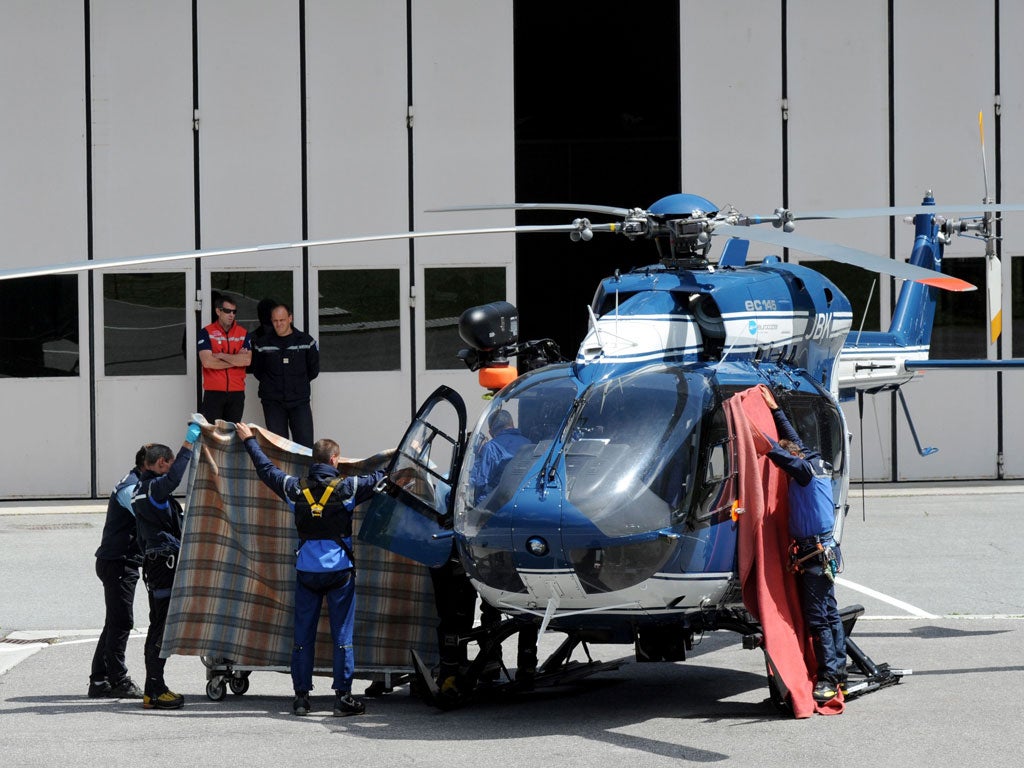Three British climbers killed in avalanche on 'Cursed Mountain'
Nine dead in worst such disaster in Alps for years – but relief as two other Britons are found alive

Three British mountaineers were confirmed to be among nine people killed by an avalanche in the French Alps yesterday but there was relief last night as two further missing UK climbers walked into a police station to declare they were safe.
The mass of snow and rocks that enveloped the multinational group early in the morning, 4,000m up the north face of Mont Maudit – which translates as "Cursed Mountain" – was described as "the most deadly of recent years" by the local authorities.
Alongside the three Germans, two Spaniards and one Swiss national who died, the three British fatalities included Roger Payne, an avalanche survival instructor and a former general secretary of the British Mountaineering Council.
The organisation's vice-president, Ed Douglas, said Mr Payne "was one of the UK's most enthusiastic and respected climbers, with a track record of Alpine and Himalayan mountaineering stretching back to the 1980s". He added: "Wherever you were in the world – in an Alpine hut, a film festival in the States or a committee meeting in Manchester – you were pleased to see him. He will be sorely missed."
When the search parties were called off the mountain due to bad weather yesterday evening, it looked likely that two more British climbers and a pair of Spaniards, who all remained unaccounted for, would be added to the list of victims.
Yet the crisis centre in Chamonix later surprised everyone when it announced that all four had presented themselves at the town's police station, having taken a different route.
Fifteen of the 28-strong expedition, who had been roped together for safety in two teams, had earlier been rescued from the side of the 4,465m-high mountain before being flown to hospital, many with broken bones.
News that the last missing climbers had survived was particularly welcome for the teams of rescue personnel due to return to the slopes this morning with the threat of a further avalanche hanging over them. Using heat-seeking devices and trained mountain dogs, they worked all day yesterday to find survivors and the bodies of the dead.
The mountaineers had set off from a hut in the early hours, only for the "slab avalanche" to strike without warning and in good weather conditions. The alarm was raised by one of those caught in the snow at 5.25am.
Though a full investigation is yet to be carried out, there were early suggestions that it could have been caused by a climber who accidentally loosened an ice sheet while crossing it, sending a blanket of snow at least 2m deep careering down.
"We had no more reason than usual to be alarmed," Jean-Louis Verdier, mayor of Chamonix, said. "It's a steep mountain face. There are big plates of snow we know of where an avalanche can easily occur. But this morning we had no reason to expect an avalanche of this size and such a tragedy."
The death toll on the slope, which is a popular route for climbers heading to the summit of the adjacent Mont Blanc, exceeded the eight killed on the nearby Mont Blanc du Tacul in 2008.
Case study: 'I was pulled 2km down a mountain in under a minute'
In March 2008 the snowboarding champion Xavier De Le Rue survived an avalanche on the slopes of Le Châtelet in Switzerland.
"Avalanches are a hazard for snowboarders. They're not something you can prepare for, other than having the right equipment and mapping out an exit strategy. My skiing counterpart and I were out with a camera crew, filming descents. It had been snowing a lot, so I was taking things slowly at the beginning. But then things were going well, so I started being less careful. Stupidly, I hadn't checked out my exit in case a slab of snow broke off. It started as a pretty localised affair; the slab was crashing down 10m behind me. I was ahead of the slide and moved sideways to escape it.
"Suddenly, it was all around me, for 50m on either side. Thankfully, I'd started using a rucksack with an airbag mechanism days before. I was floating on a sea of snow – like a small insect on a huge wave. This undoubtedly saved my life. All I could do was pull the trigger and hope for the best. A big warning light blinked in my head and then I was back in the tsunami. The impact of the fall knocked me unconscious, and I was pulled 2km down the mountain in less than a minute. I remember the feeling of being dragged downwards, and then a blur. I was transferred to hospital after my friends found me at the bottom of the slope. I was in shock but, in fact, I had only twisted a knee ligament and was concussed for a few hours."
Subscribe to Independent Premium to bookmark this article
Want to bookmark your favourite articles and stories to read or reference later? Start your Independent Premium subscription today.

Join our commenting forum
Join thought-provoking conversations, follow other Independent readers and see their replies